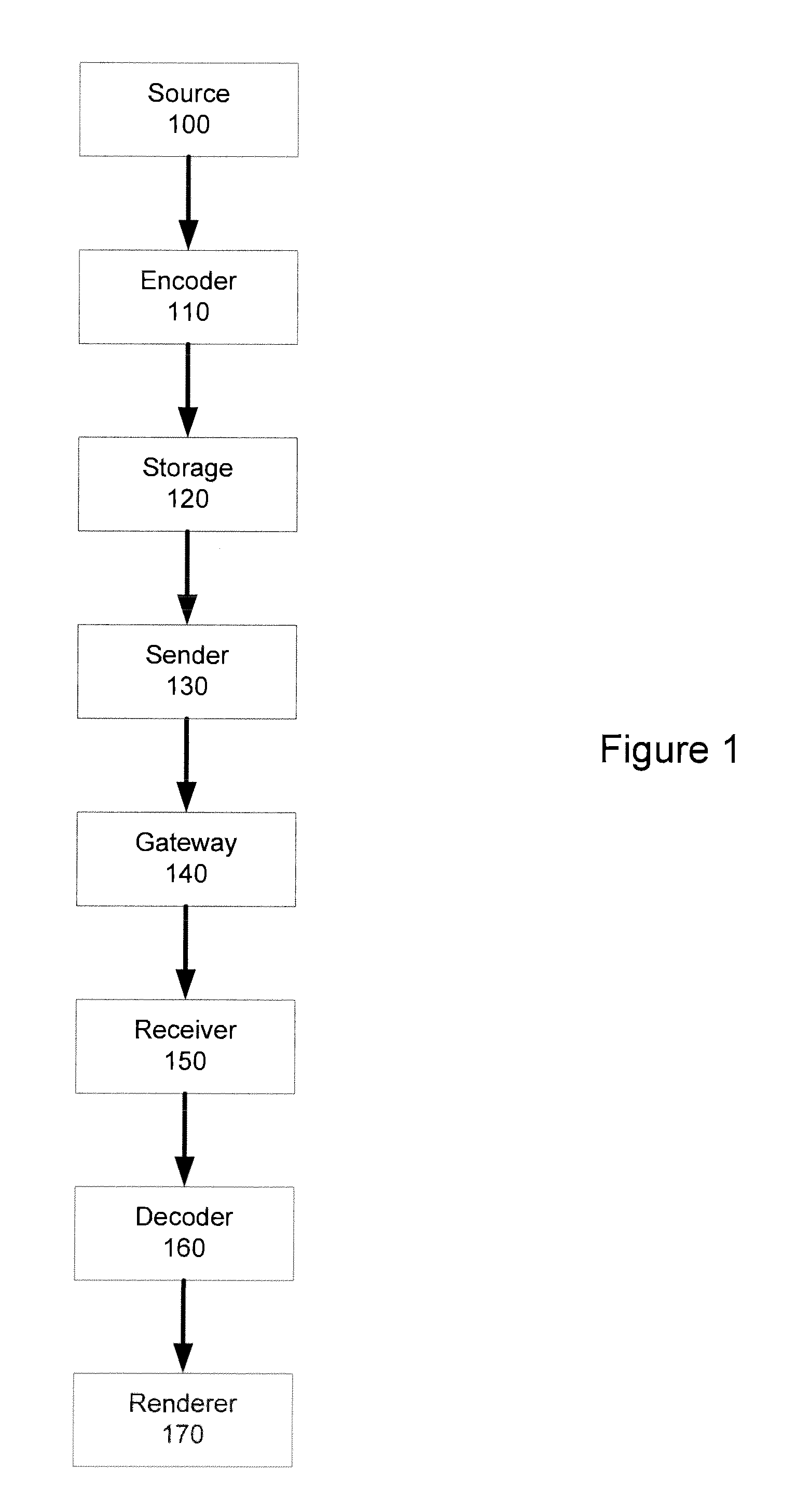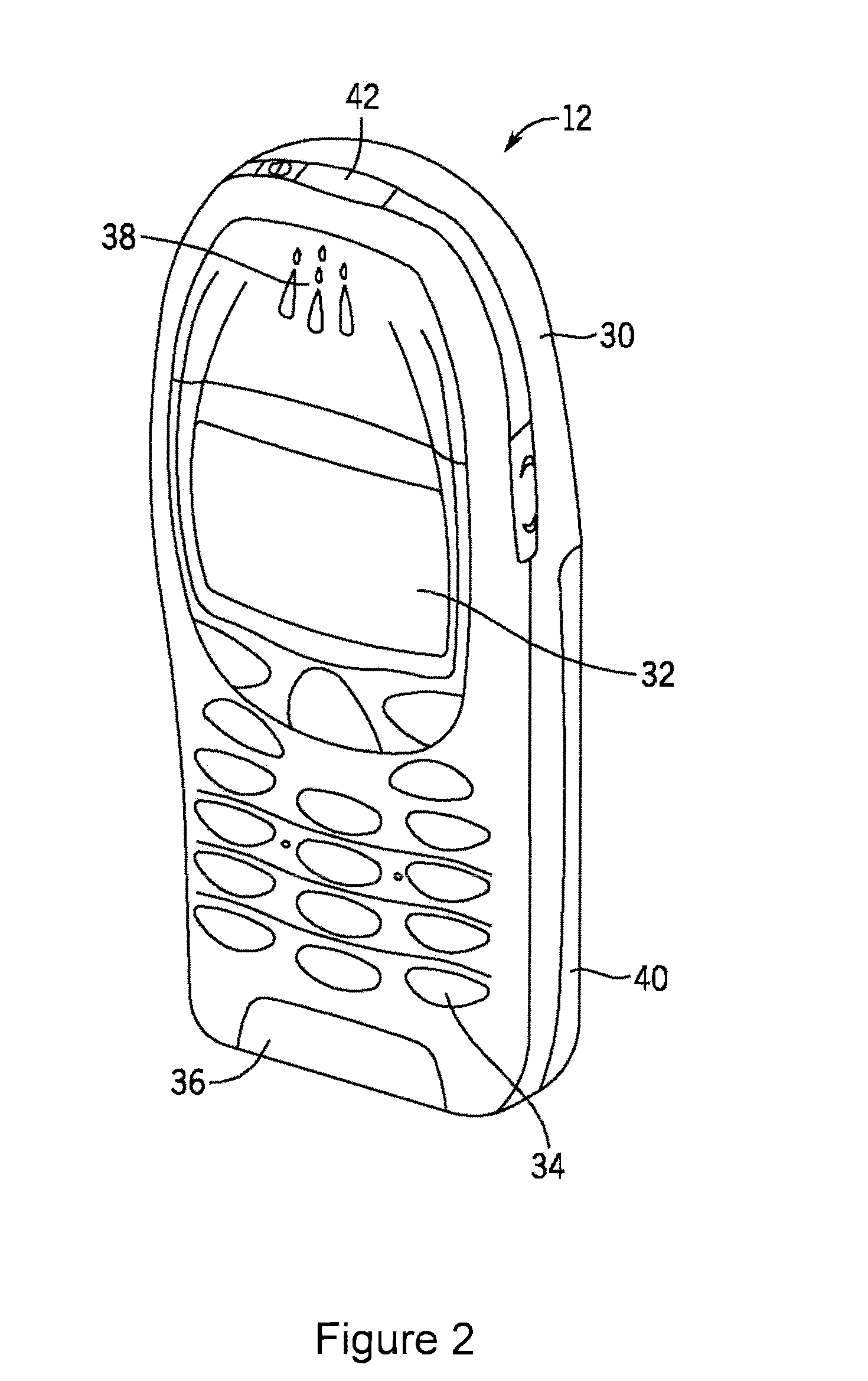Discardable lower layer adaptations in scalable video coding
a video coding and lower layer technology, applied in the field of scalable video coding, can solve the problems of reducing coding efficiency, affecting the accuracy of decoding results, so as to achieve the effect of improving coding efficiency
- Summary
- Abstract
- Description
- Claims
- Application Information
AI Technical Summary
Benefits of technology
Problems solved by technology
Method used
Image
Examples
Embodiment Construction
[0024]The present invention provides a system and method for enabling a coded slice in a coded picture consisting of more than one coded slice to be coded as discardable to higher layers (i.e., not required for the decoding of high layers) in an efficient manner. First, transmitting syntax elements that must be set to fixed values is avoided, thus improving coding efficiency. Second, interference from possibly discarded data in the upsampling process of sample or residual data used for inter-layer prediction is avoided as well, thus allowing for the correct decoding of higher layers.
[0025]The present invention includes a video encoder (and encoding method) for separating data needed for inter-layer prediction and not needed for inter-layer prediction. In addition, the present invention also includes a video decoder (and decoding method) identifying data not needed for inter-layer prediction and not in the desired layer for playback, as well as omitting the decoding of such identifie...
PUM
 Login to View More
Login to View More Abstract
Description
Claims
Application Information
 Login to View More
Login to View More - R&D
- Intellectual Property
- Life Sciences
- Materials
- Tech Scout
- Unparalleled Data Quality
- Higher Quality Content
- 60% Fewer Hallucinations
Browse by: Latest US Patents, China's latest patents, Technical Efficacy Thesaurus, Application Domain, Technology Topic, Popular Technical Reports.
© 2025 PatSnap. All rights reserved.Legal|Privacy policy|Modern Slavery Act Transparency Statement|Sitemap|About US| Contact US: help@patsnap.com



